waterworks
|
-
About this Collection
One of the many engineering accomplishments of the ancient Romans was the use of water as an architectural feature.
Vitruvius described the construction and design of various hydraulic systems, aquaducts, water-powered devices, and decorative fountains.
When Roman skills were essentially lost in Western Europe during the Middle Ages, the Islamic world developed intricate gardens that made artistic use of water features.
After the Renaissance rediscovery of architectural hydraulics, water again became a favored element in European architectural design. Baroque architects in particular made use of elaborate fountains to accent the impressive gardens of the nobility.
-
Lalique fountain at the 1925 Art Deco exposition in Paris
A night view of a glass fountain designed by famed designer René Lalique. This 45 foot high fountain became one of the symbols of the 'Exposition des Arts Décoratifs et Industriels Moderne'.
This exposition, held in Paris in 1925, introduced and celebrated the latest trends in design, and ultimately gave the streamlined style now known as 'Art Deco' its name.
This photograph appears in the exposition's catalog of buildings and gardens.
-
Book 3 of Falda's book on Roman fountains was dedicated to a nephew of the reigning Pope
The dedication page to Book Three of Fontane di Roma, compiled and engraved by Giovanni Battista Falda. The dedicatee is Livio Odescalchi, Duke of Ceri, nephew of the reigning Pope at the time, Innocent XI.
Falda (1643 - 1678) was one of the first to document contemporary Roman structures in a systematic way. He specialized in this type of publication, also producing volumes on the gardens and the palaces of Rome.
-
Design for an elaborate Baroque fountain
Third of a series of designs for elaborate Baroque fountains from Paul Decker's Furstlicher Baumeister, oder Architectura civilis (Masterbuilder for Princes, or Civil Architecture).
Decker (1677-1713) was a trained architect, but is remembered today primarily for this book. Published between 1711 and 1716, it influenced the development of German Baroque architecture. As a visual document of idealized projects presented almost exclusively without text, it illustrated to the German nobility how to plan, build and decorate residences and gardens.
-
Fountain at the foot of the Spanish Steps in Rome
The boat-shaped fountain by Gianlorenzo Bernini that stands in the Piazza della Trinita de Monti, illustrated in Giovanni Battista Falda's Fontane di Roma, published in the late 17th century. This fountain is well-known to tourists, as it sits at the foot of Rome's Spanish Steps.
-
Fountain in a Vatican piazza
A fountain in the Vatican Palace grounds, illustrated in Falda's Fontane di Roma, published in the late 17th century.
Giovanni Battista Falda (1643 - 1678) was one of the first to document contemporary Roman structures in a systematic way. He specialized in this type of publication, also producing volumes on the gardens and the palaces of Rome.
-
Fountain on the Capitoline Hill in Rome
Fountain in the Massimi Palace, beneath the Campidoglio (Capitoline Hill). The architect named is Carlo Fontana, the papal architect who documented the Vatican complex in the monumental Templum Vaticanum of 1694.
This image appears in Giovanni Battista Falda's Fontane di Roma, published in the late 17th century.
-
Obelisk and fountain in Rome's Piazza Navona
The landmark baroque fountain by Gianlorenzo Bernini that stands in the Piazza Navona in Rome. This illustration appears in Giovanni Battista Falda's Fontane di Roma, published in the late 17th century.
-
Public Conduit for water shaped as a tapered Doric column ends Pugin's Contrasts drawing book
-
Pugin's Public Conduit for water in the shape of a small Gothic Revival shrine
-
View of a Baroque grotto large enough to allow boating
Perspective view of a grotto from Paul Decker's Furstlicher Baumeister, oder Architectura civilis (Masterbuilder for Princes, or Civil Architecture). Grottoes began as artificial caves in the gardens of renaissance villas and developed into fanciful creations with sculptures, fountains, and other waterworks in the 18th century. In this illustration, the grotto is large enough to allow boating.
Decker (1677-1713) was a trained architect, but is most recognized now as an imaginative theoretician and for this book. Published between 1711 and 1716, it was extremely influential upon the development of German Baroque architecture. As a visual document of idealized projects presented almost exclusively without text, it illustrated to the German nobility how to plan, build and decorate residences and gardens. His rich yet stately designs are comprehensively detailed by plans, elevations, sections and decorative patterns in large, sumptuous engravings.
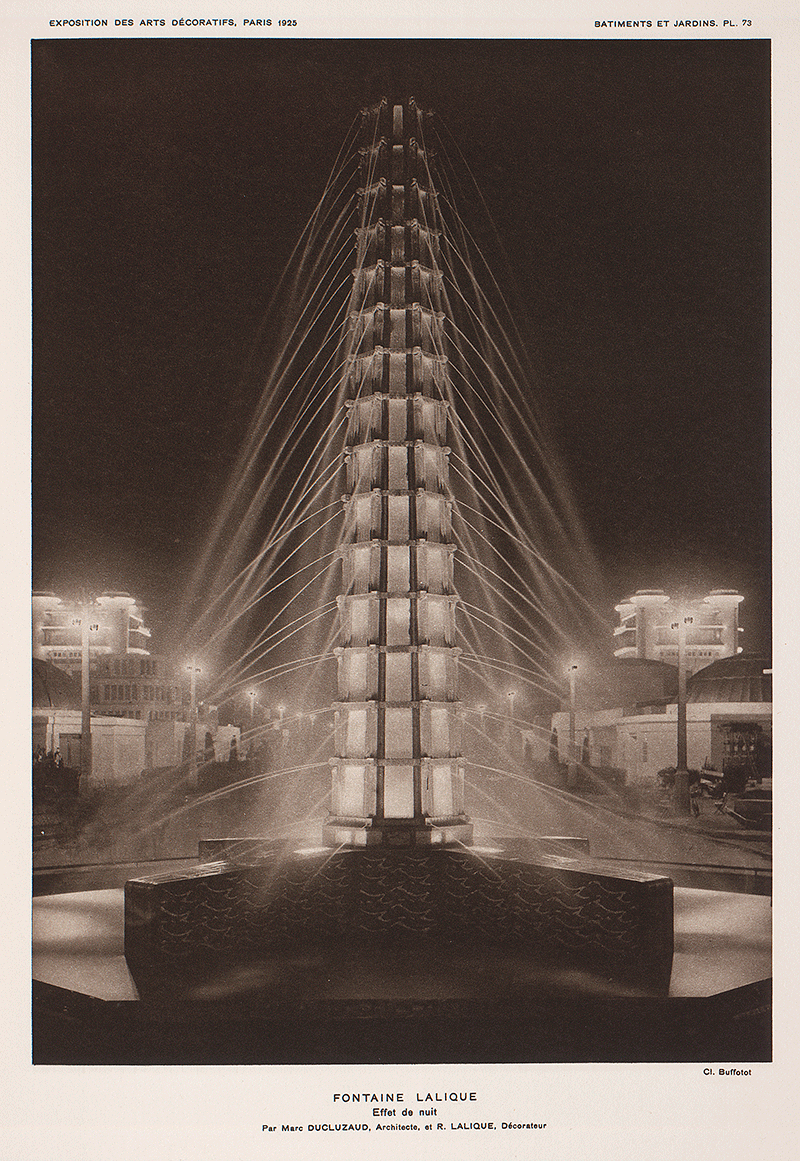 View Image
View Image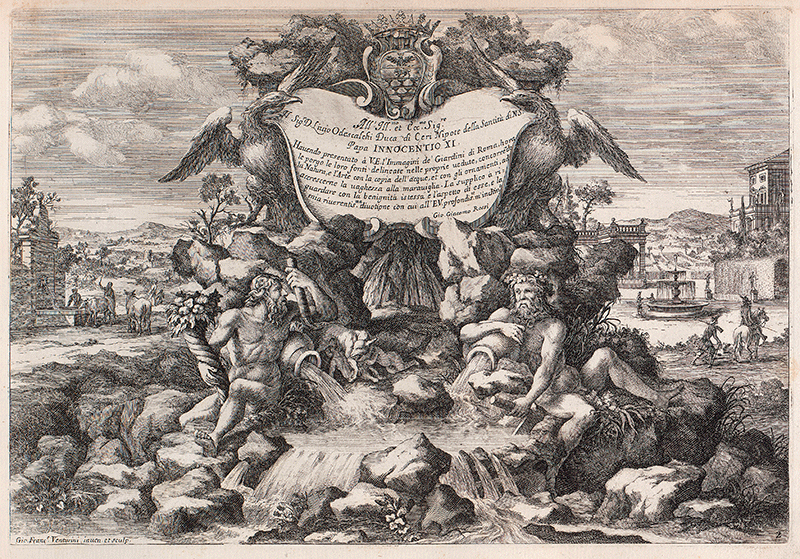 View Image
View Image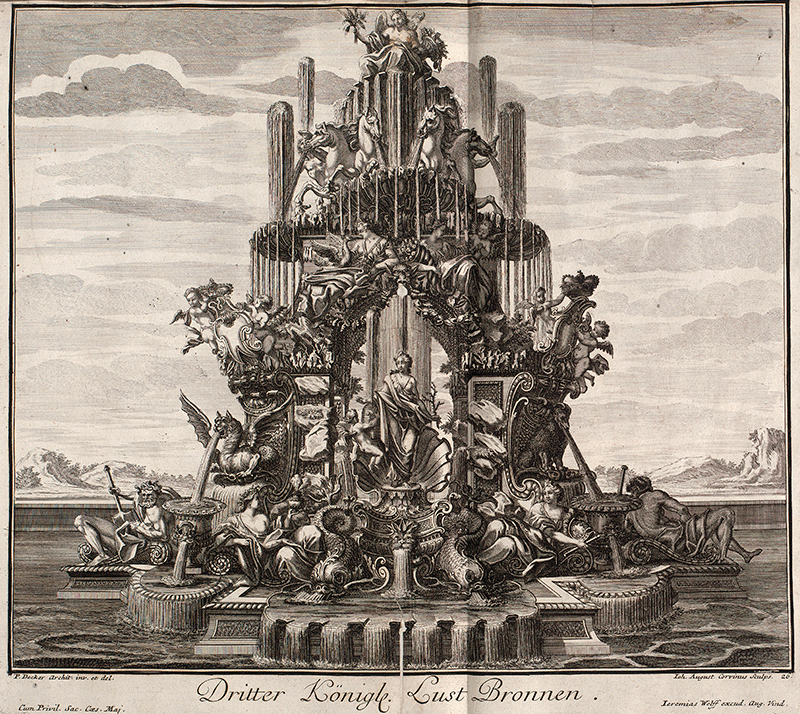 View Image
View Image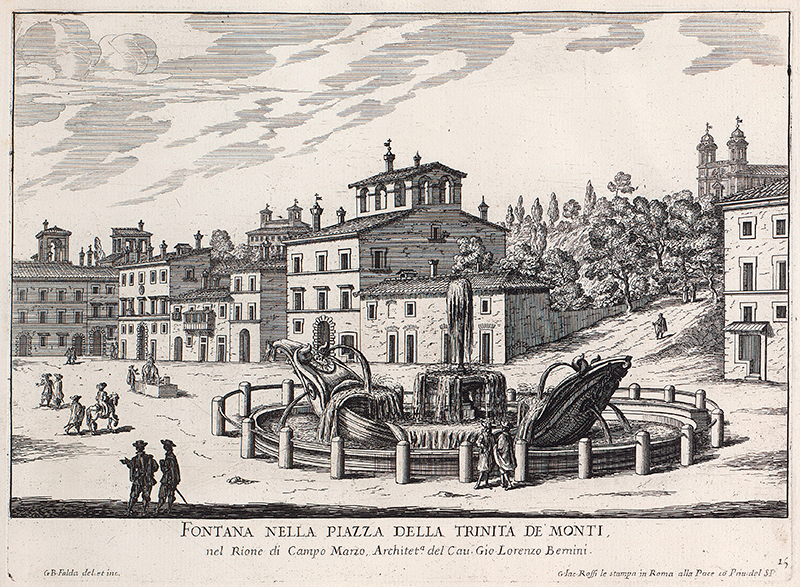 View Image
View Image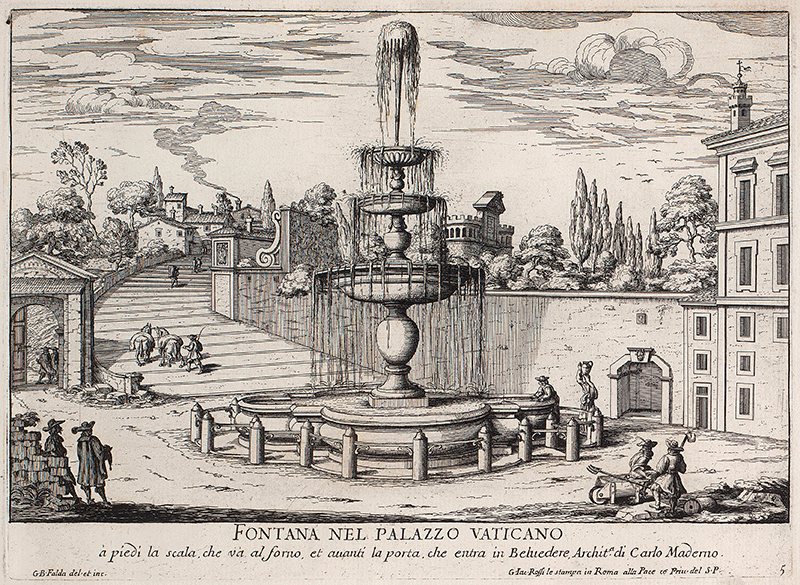 View Image
View Image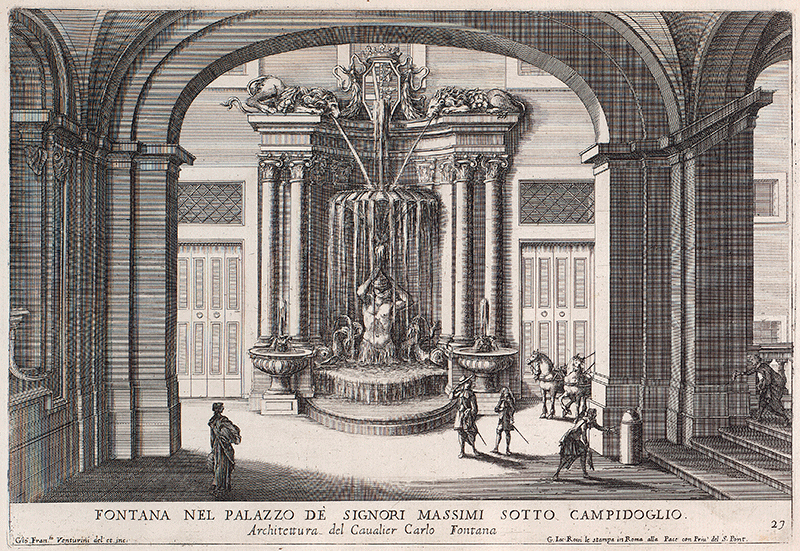 View Image
View Image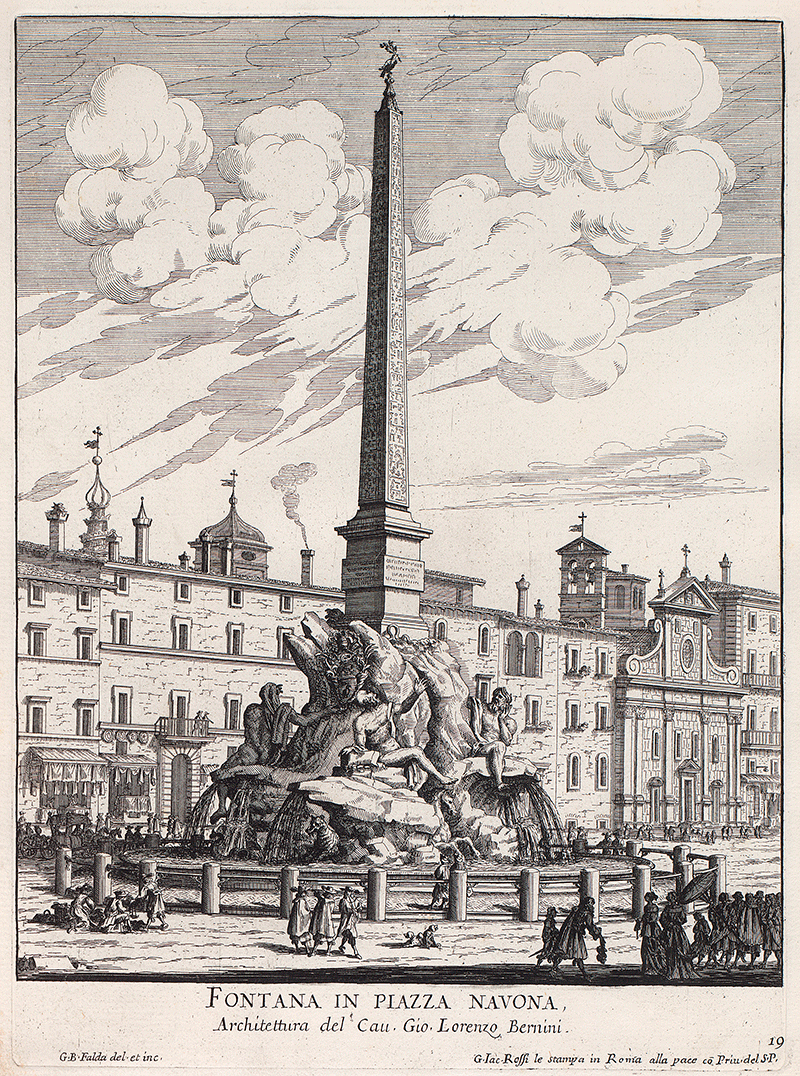 View Image
View Image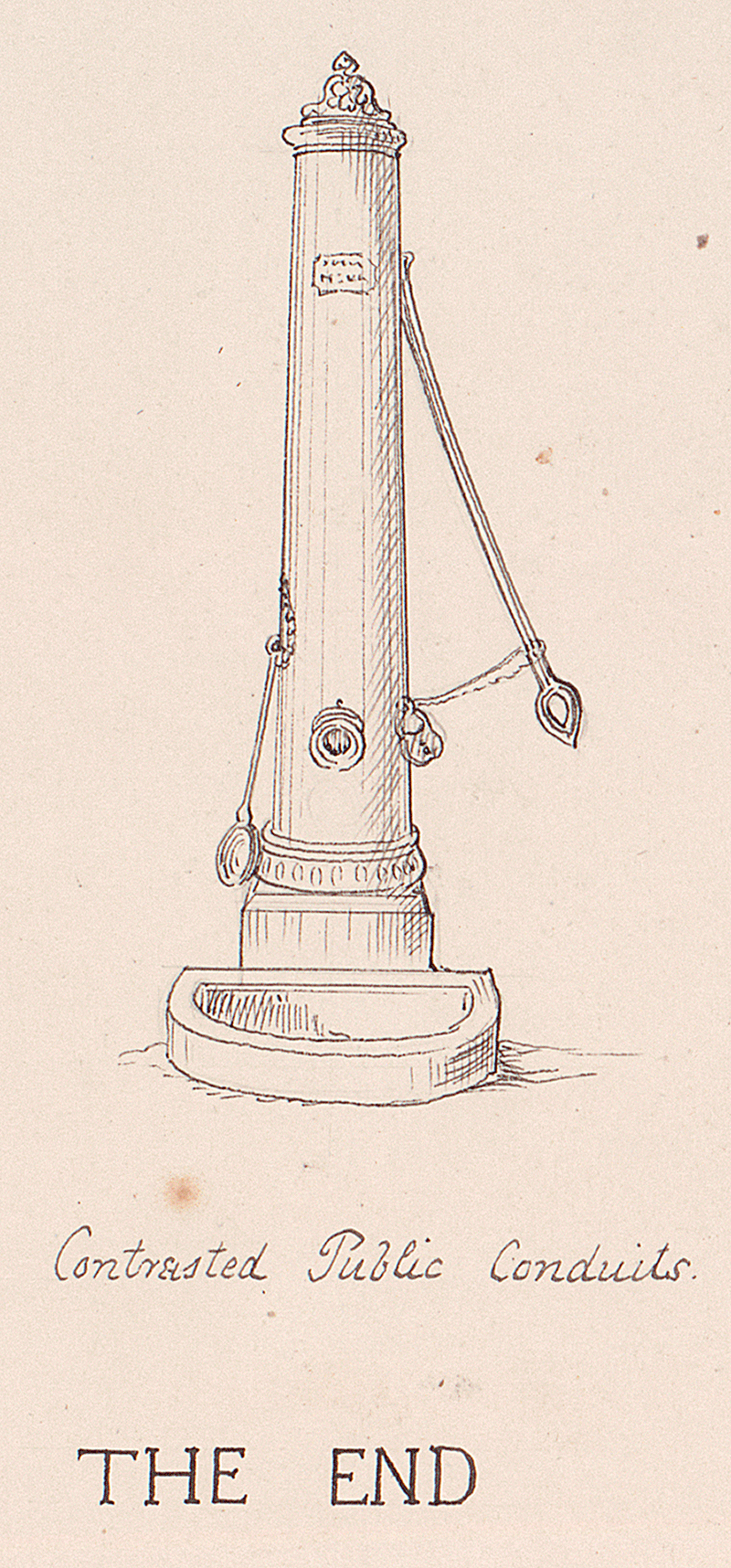 View Image
View Image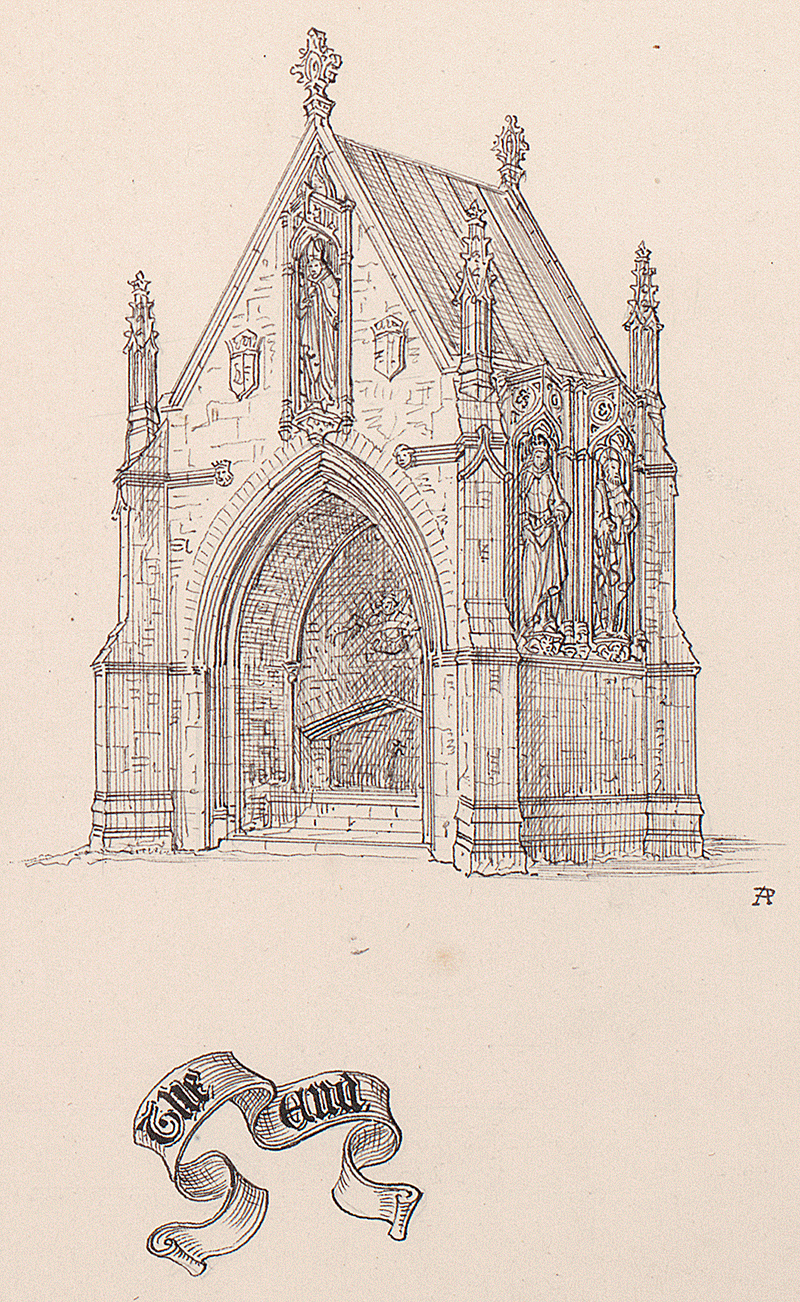 View Image
View Image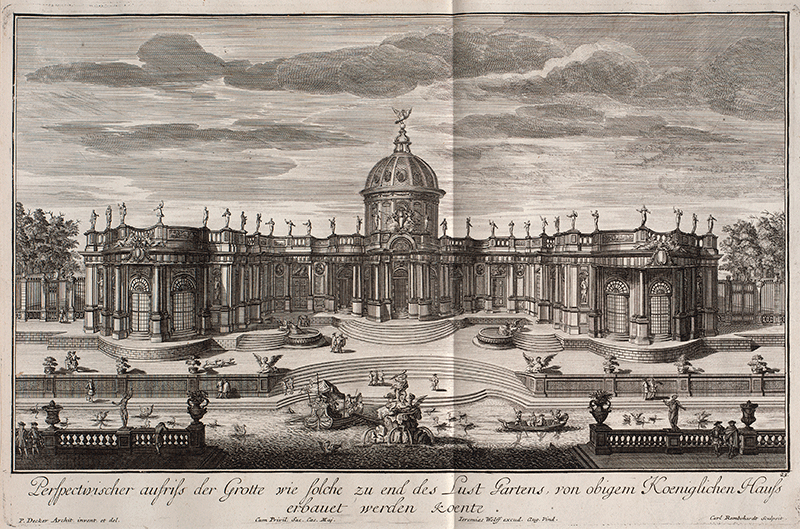 View Image
View Image